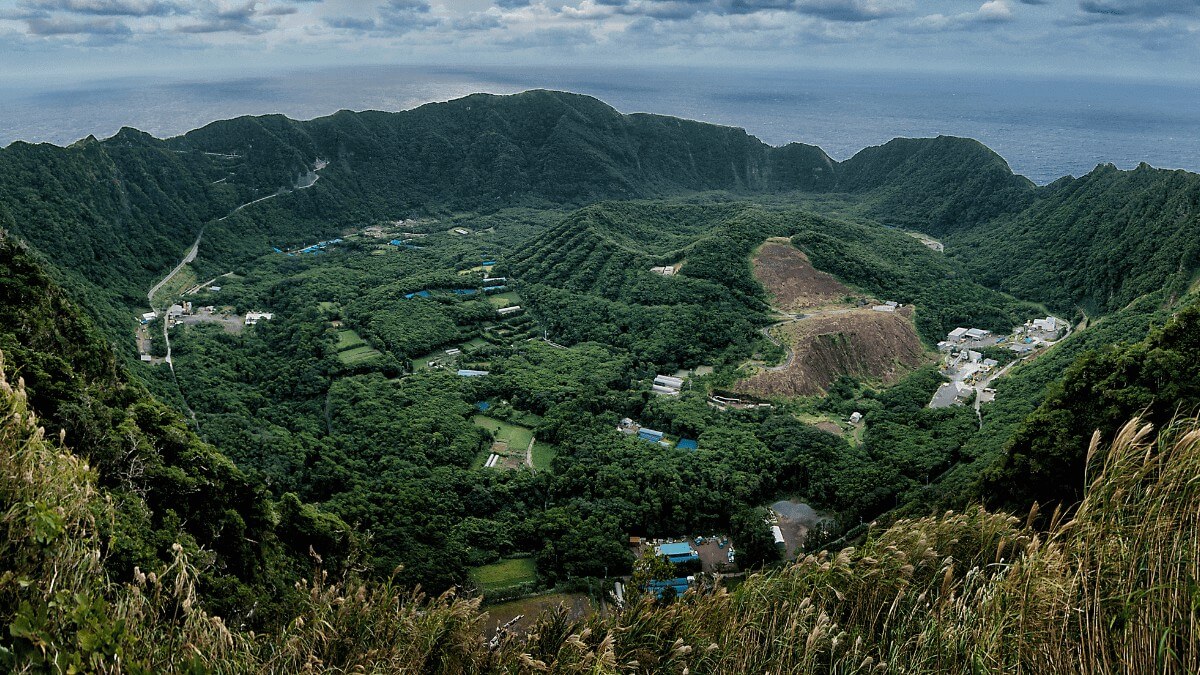Aogashima is a volcanic island in the Philippine Sea, under the administration of Tokyo, despite standing over 200 miles away from the Japanese mainland. The island is known for its unique double volcano structure, with a smaller volcano, Maruyama, located inside the larger caldera. You read that right; the island houses a volcano within a volcano!
Inside Aogashima island
The 200 people there have access to the world’s most natural planetarium, as the island offers a perfect view of the Milky Way. Their lifestyle revolves around fishing, farming, and making a unique liquor, “shochu,” from sweet potatoes. The island has its own school, post office, helipad, and harbor. However, no restaurants or convenience stores highlight the islanders’ self-sufficiency.
There are also geothermal vents and hot springs from the island’s volcanic activity.
Is Aogashima active?
Aogashima is an active volcanic island. However, the last eruption was in the late 18th century, 1785. Around 140 of the 327-then inhabitants perished in the eruption and subsequent famine.
The Japan Meteorological Agency actively monitors the volcano for any seismic activity, even though there’s no imminent sign of an eruption.
How to go to Aogashima Island
To reach Aogashima Island, start from Tokyo and take either a 45-minute flight or a 10-hour overnight ferry to Hachijojima Island. From Hachijojima, you have two options: a 20-minute helicopter ride or a 2.5 to 4-hour ferry journey to Aogashima, depending on sea conditions.
You can book the helicopter service, which runs once a day, up to a month in advance, but remember it’s subject to weather conditions. The ferry doesn’t operate daily but can accommodate about 90 passengers. You can book both services through travel agencies or directly with the operators.
Twitter user 725578cc offers some invaluable information on the reality of getting to the island:
“There are two ports on this island, but one is inaccessible due to a landslide that caused the access road that crosses the mountain from the village inside the caldera to collapse.
Due to the rough seas at the remaining port, it is not uncommon for ships to give up on berthing even though they are just around the corner.
The most reliable means of transportation to Aogashima is by helicopter.
However, it should be noted that the helicopter, which has a capacity of 10 people, is a daily means of transportation for the island’s maintenance contractors and island residents, and the seats are likely to be filled.
(Also, this island has poor water resources, so camping outdoors is prohibited. Furthermore, there are virtually no shops that sell food, so the only option is to book an inn in Japanese. Visiting Aogashima is difficult even for Japanese people. Therefore, we cannot recommend this course unless you are fluent in Japanese and confident that you can act like a Japanese person.)”




